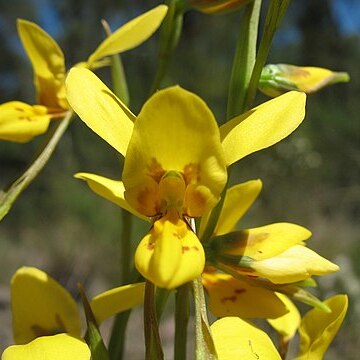A ground orchid. It grows 15-50 cm high. The leaves are 10-25 cm long by 0.3-0.6 cm wide. There are 1-2 leaves per plant. They are narrow and have a channel along them. The flower stem is 15-50 cm tall and has 2-5 flowers. The flowers are 2.5-4.5 cm wide and a deep golden yellow. Tubers can be quite large.

